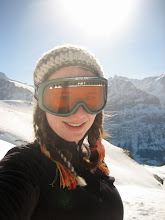68.7% of the world's freshwater is stored in ice at the poles and at elevation. Despite this huge reservoir of our most important natural resource, staggeringly little is known about the cryosphere and its interaction with global climate. Glaciers are effectively just ice that has accumulated over time and moves under its own weight, but they have a major impact on sea level and freshwater supply for humans. All this is just to say that understanding glacial hydrology is pretty important. In the last several years it has come to light that the predominant theory of water movement through glaciers (the Shreve model) that is the basis for effectively all studies of glacial hydrology is… less than accurate. In fact, it may be fully wrong in predicting water movement through glaciers in particularly cold regions of the world.
The term project that I'm donning here at UNIS involves sensing of meltwater channels in glaciers. I'm comparing maps of meltwater channels that were made through glaciospeleleology (ice caving!) with ground-penetrating radar data from the surface to see how good of a job the GPR does of mapping the meltwater channels. In places like Greenland where the ice sheets are huge, it is much more practical to try to map the channels from the surface, so it is important to know how good of a job GPR does at sensing the channels. I'm really excited about this work and hope to continue it in the future (I'm even talking with my professor about turning it into a masters project..).





1 comment:
Inspiring, Kiya, on both a human level (freebie cabins, no locks) and a geological realm (amazing glaciers), too.
Post a Comment